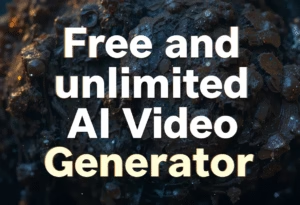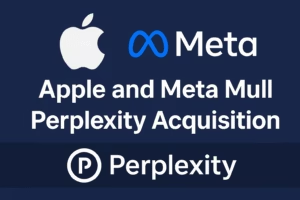How AI Is Revolutionizing Student Life in 2025

If you are even slightly curious about artificial intelligence, you have likely come across the name “Hugging Face.” But what exactly is it?
Hugging Face is an open-source AI platform that makes cutting-edge machine learning models accessible to everyone, from researchers and developers to complete beginners. Think of it like the GitHub of AI, but way more user-friendly.
Originally created to support natural language processing (NLP), Hugging Face now offers thousands of pre-trained models that can do everything from text generation, translation, and image recognition, to audio transcription, AI chatbots and more.
1. Why Is Hugging Face So Popular?
Hugging Face has quickly become one of the most trusted names in the AI space and the reasons are below:
1) It is open source:
Anyone can access and use the models, contribute to them or improve existing code.
2) Thousands of Pre-trained Models:
Text summarization, AI image generation, audio-to-text to name a few. You will get a model for everything.
3) Easy Interface for Beginners:
Their “Inference API” allows anyone to try AI tools online, without any installation or setup.
4) Free to Start:
Most tools are free for basic use. You can upgrade only if you need more advanced capabilities.
2. What Can Hugging Face Be Used For?
Whether you are a student, freelancer, content creator or just curious about AI, Hugging Face offers practical tools you can use today.
1) Text Generation:
Use models like GPT-2, GPT-Neo, or LLaMA to write essays, scripts or marketing copy.
Try it here: https://huggingface.co/models?pipeline_tag=text-generation&sort=trending
2) Text Summarization:
Paste in long articles or PDFs and get short summaries.
Try it here: https://huggingface.co/tasks/summarization
3) AI Image Generation:
Use models like Stable Diffusion to turn text prompts into beautiful images.
Try it here: https://huggingface.co/spaces/stabilityai/stable-diffusion
4) Audio Transcription:
Turn speech into text using Whisper AI or Wav2Vec2.
Try it here: https://huggingface.co/facebook/wav2vec2-base-960h
5) Language Translation:
Translate content across more than 100 languages using models like MarianMT.
Try it here: https://huggingface.co/Helsinki-NLP/opus-mt-en-fr
3. How Can a Beginner Use Hugging Face?
You don’t need to be a coder. You can try it now using below steps:
Step 1: Go to https://huggingface.co/spaces
This is where AI demos live. You can interact with tools via a simple website interface.
Step 2: Search for Your Task
For example:
“Text summarization”
“Stable diffusion”
“Text-to-speech”
Step 3: Enter Your Input
Just paste text or type a prompt. It is as easy as using Google.
Step 4: Get Results Instantly
Use the results for your projects, blogs, YouTube content or schoolwork.
4. Use Cases for Hugging Face in Real Life
1) Students:
a) Summarize textbook chapters.
b) Generate study notes.
c) Translate foreign languages.
2) Freelancers:
a) Create client blog content using AI.
b) Translate content into multiple languages.
c) Build small apps using open-source models.
3) Content Creators:
a) Script YouTube videos.
b) Generate B-roll visuals using AI.
c) Add subtitles from audio.
4) Researchers:
Train and fine-tune custom NLP models.
Use the datasets library for ML projects.
5. What is Trending on Hugging Face in 2025?
Hugging Face is always buzzing with innovation. Some of the current hot trends are:
1) LLaMA 3 & Mixtral Models:
Meta’s latest LLaMA 3 models and Mixtral are highly efficient and being tested for AI chatbots and assistants.
2) Audio & Video Models:
More tools are emerging for real-time audio-to-text, emotion recognition and even AI-generated video clips.
3) Multimodal Models:
New models that understand text + image + audio at the same time are rising.
4) Private AI:
Hugging Face now supports running AI models locally (like ChatGPT offline) which is great for users who prefers privacy.
6. What Are "Spaces" on Hugging Face?
“Spaces” are live AI demos. It is kind of mini web apps powered by Hugging Face models. Anyone can create and host a “Space” using below modules:
1) Gradio: Easy UI for models
2) Streamlit: Python dashboard framework
These are great for developers and creators to share their work or build a portfolio.
See Spaces: https://huggingface.co/spaces
7. Is Hugging Face Safe?
Yes. It is a secure, community-backed platform supported by major companies including Amazon, Google and Microsoft. However, like any AI tool, it’s important to check outputs and not rely on generated data for critical decisions.
8. Final Thoughts
Hugging Face is not just for developers anymore. It is becoming a mainstream platform that empowers anyone to explore, learn and use artificial intelligence. Whether you are a student, content creator or just AI-curious, Hugging Face has something useful for you. Also, it is mostly free. As AI continues to grow, platforms like this will be at the center of the digital revolution.
You Might Also Like


